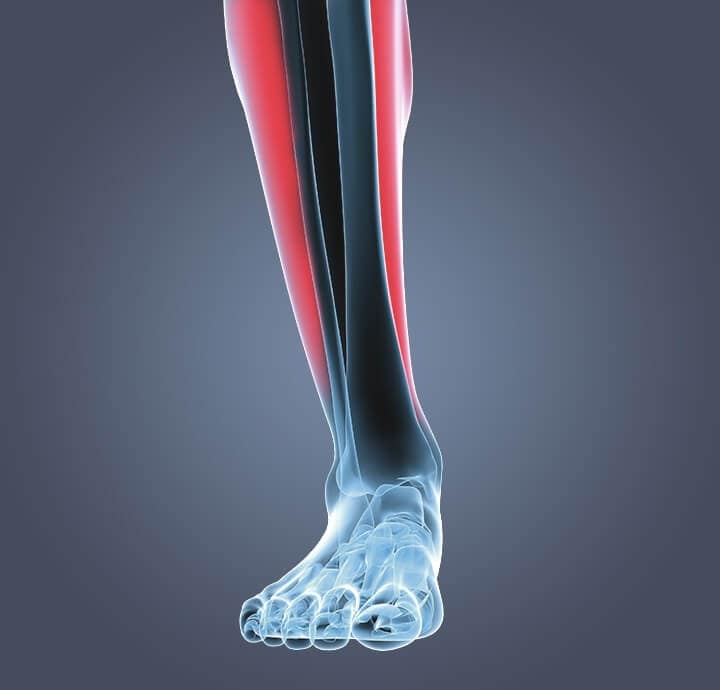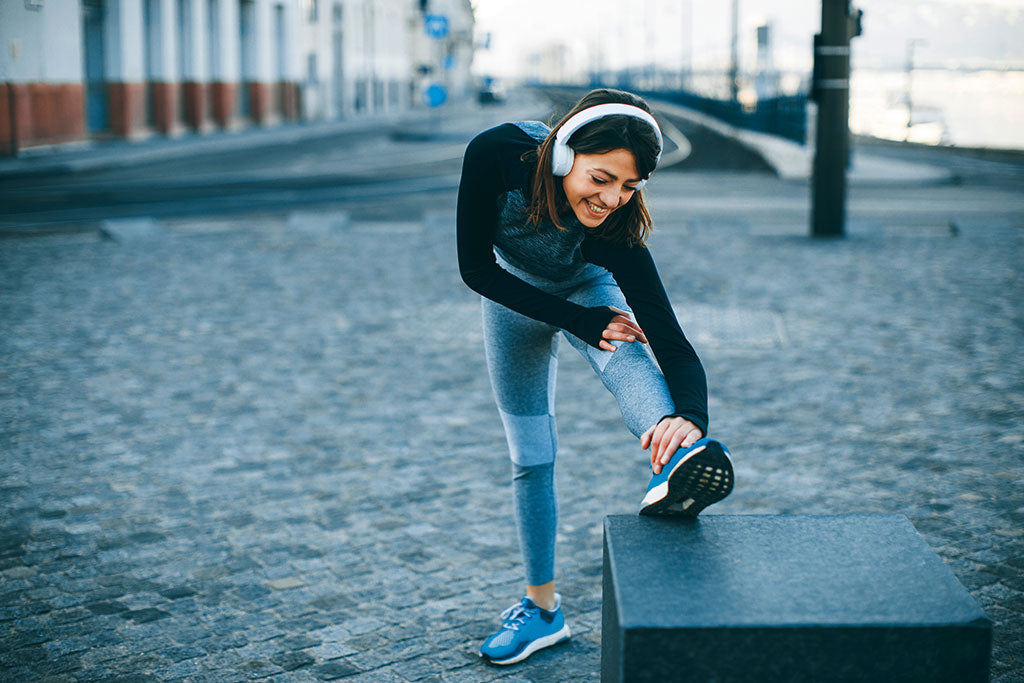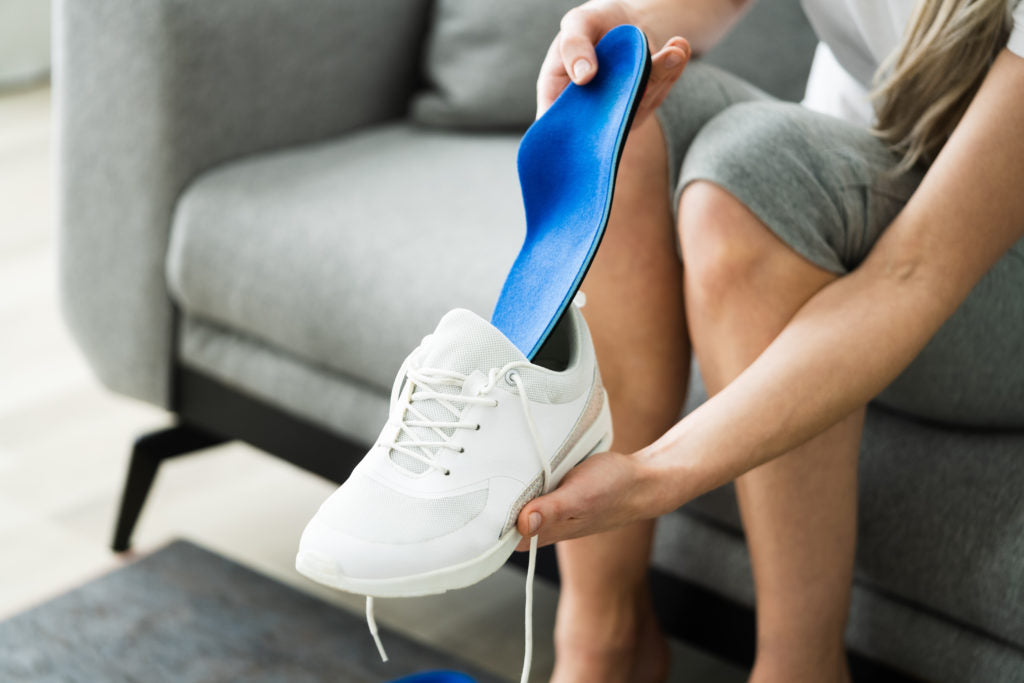Shin splints refer to the pain felt along the inner edge of your tibia, or shinbone. Also known as medial tibial stress syndrome, shin splints don’t actually occur in the shin bone, but in the connective tissues of the muscles around the shins.

Repetitive activities, especially activities that put pressure on the forefoot such as climbing hills, can overwork the tissue and muscle that surround your shinbone, leaving the tissue, muscles, and tendons around your shinbone inflamed and sore. The symptoms of shin splints can include either a sharp, or a dull and throbbing pain, that occurs during and after exercise. They can be irritated by touching the affected area. The pain is more prominent during physical activity, but may linger afterwards as the condition gets worse.
If you are experiencing pain in the lower part of your leg near your shin, it is important to first seek medical advice for an accurate diagnosis and to get a treatment plan that is right for you.
High-impact activity, like running and jumping, is the most common cause of shin splints, but the condition isn’t limited to sprinters. Anyone who suddenly increases mileage, switches workout surfaces (like going from mats to hard surfaces), or is making changes to their exercise routine may experience shin splints. These changes may include:
- Increasing the duration and intensity of your exercise, such as running further or across more difficult terrain.
- Increasing the frequency of your exercise, such as training more days of the week.
Along with runners, dancers and military recruits are also at a higher risk of developing shin splints. Also, those with high arches or flat feet, or who exercise with improper or worn out footwear, are more at risk for this condition.
The good news is that you can prevent shin splints with some simple steps on your own:
• Wearing supportive shoes can be an important way to prevent shin splints. Worn-out shoes can place undue stress on your feet and shins. By choosing footwear or insoles with appropriate cushioning can lessen this stress. Prescription or over-the-counter orthotics can also be used, and may be especially helpful for those with flat feet. By supporting and stabilizing the foot, they can reduce stress on the shin and lower leg.
• Wearing orthotic inserts or insoles can help support your arches and absorb the shock of high-impact exercise. Dr. Scholl’s Running Insoles are clinically proven to help prevent pain from shin splints, plantar fasciitis and runner’s knee.
• Don’t overload your shins with too much running or high-impact activity at too high an intensity
• Strengthen and stabilize your legs, ankles, hips and core with light weight training. Cross-training with lower impact sports can also help reduce the stress on your feet and legs.
• Flexibility and strengthening exercises are also an important part of treatment and prevention for this condition. Try exercises that stretch out your lower legs, calves and Achilles tendon, such as calf stretches and toe raises.
Remember that when you do begin exercising, you should warm-up beforehand to prevent developing shin splints. If you begin feeling pain in your shins again, you should stop this activity and rest for several days, using ice compresses on your shins. You should reduce the intensity, duration, or frequency of your training even more when you next begin exercising.
If your shins do not recover using self-managed treatment methods, you may want to discuss your condition with your doctor. They may be able to determine if there is another cause for your shin splints and can advise you on further treatment.

Shin splints often heal on their own and usually require at least a couple weeks of rest from the activity that caused them. Low-impact exercise, such as swimming or stationary cycling, can keep you active during this time while your shins recover.
Other treatments for shin pain include over-the-counter pain relievers, which can provide relief from the pain and swelling, and using the RICE method:
- Rest – give your legs a break and time to heal, either by reducing your activity or avoiding movement altogether for a time
- Ice – keep an ice pack on for 20 minutes at a time every 3 or 4 hours for up to 2 days until the pain is gone
- Compression – wrap your shins for extra support and to help them warm up while active
- Elevation – prop up your legs on a pillow while you’re resting to further lighten the load


